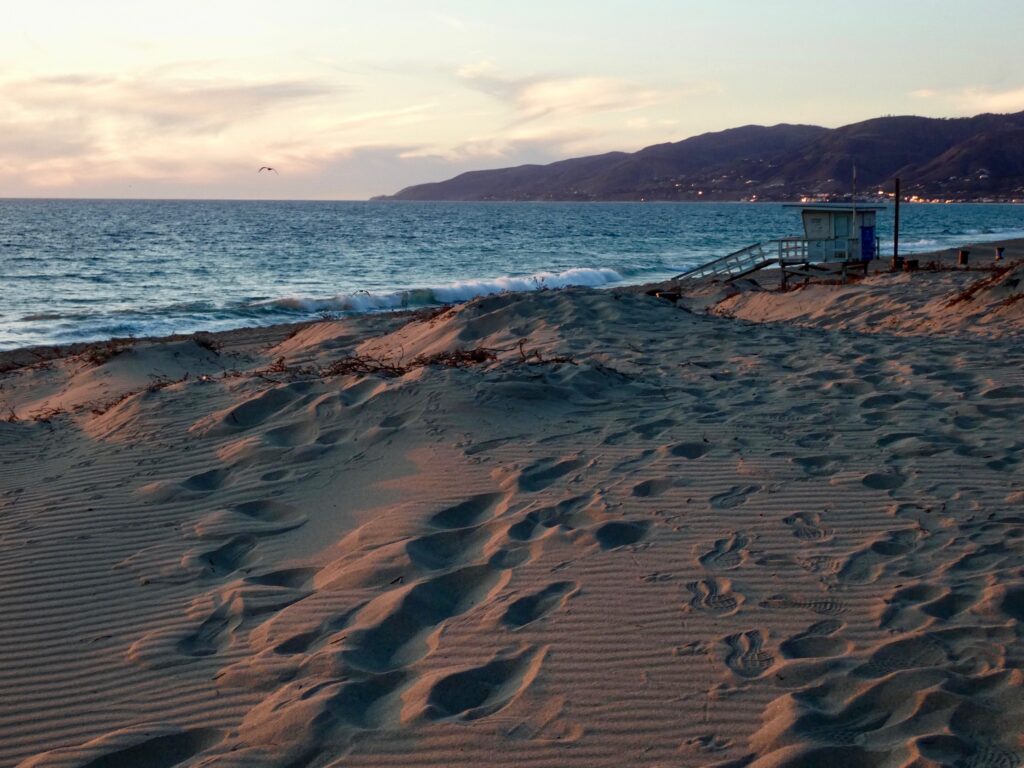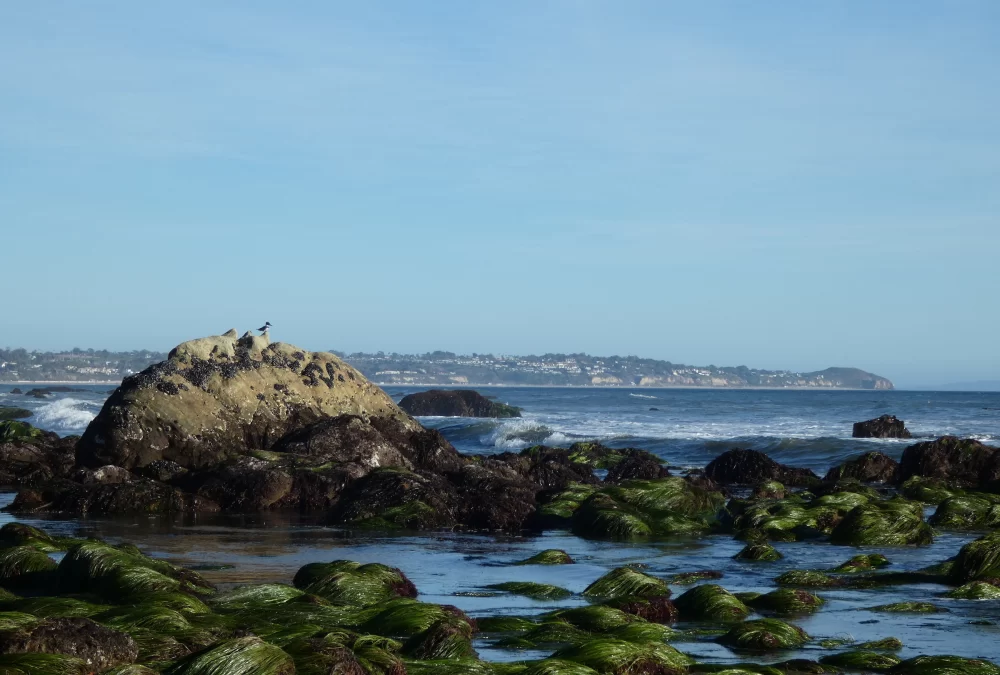I must down to the seas again, for the call of the running tide
Is a wild call and a clear call that may not be denied;
And all I ask is a windy day with the white clouds flying,
And the flung spray and the blown spume, and the
sea-gulls crying.
—John Masefield, “Sea Fever”
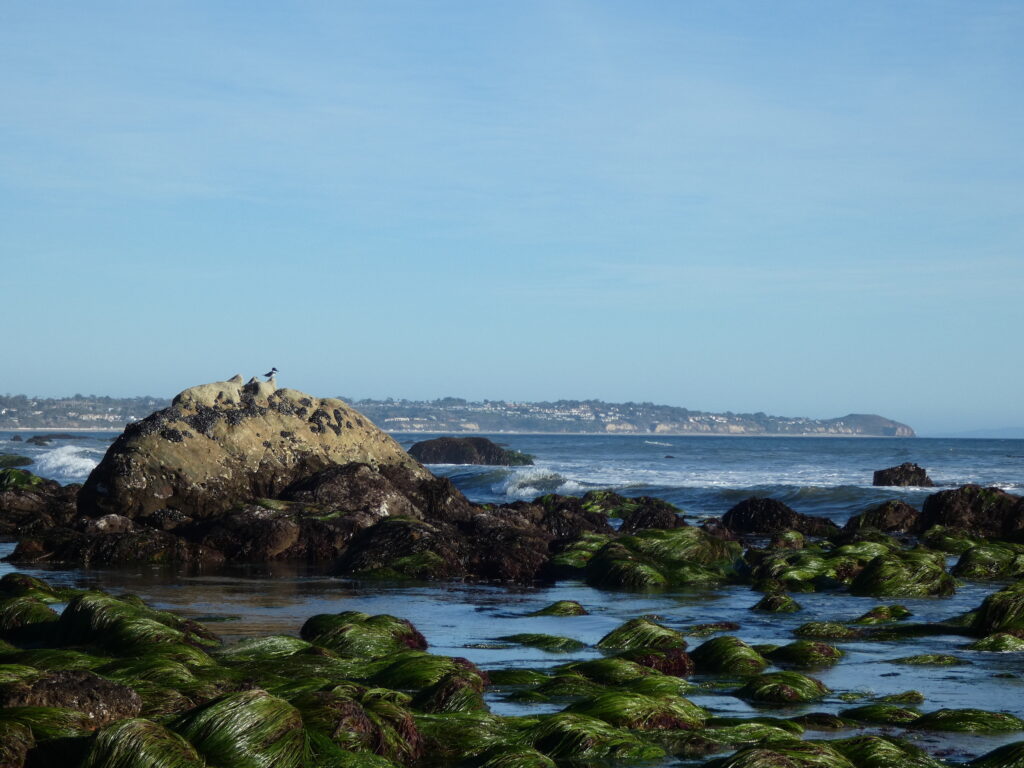
Throughout the coronavirus pandemic and the political turmoil of recent months and days, local beaches have provided a welcome respite from stress and anxiety. Winter on the beach in Malibu is a season of dramatic tides, vivid sunsets, and empty, wind-swept expanses of sea and sky.
For beachcombers, birdwatchers and solitude seekers, this is the best time of the year, and afternoon low tides in mid January and February are an added inducement to linger and explore. A low tide at sunset offers all the best things about winter on the beach—a walk along an uncrowded shoreline with the potential for a dazzling natural light show and a chance to see dolphins, sea lions, and migrating gray whales.
The first whale sightings occur in December, with the peak migration generally arriving in early spring. Northbound gray whales, especially those with young calves, tend to stay close to shore on the way back to their Arctic feeding grounds. Whales can be spotted anywhere along the coast, but Westward Beach in Malibu and Leo Carrillo up the coast by the Ventura county line are prime whale-watching locations.
Good choices for tide pool exploration include Leo Carrillo, and the neighboring pocket beaches: El Matador (always crowded on weekends, but easy to access on weekdays), El Pescador, La Piedra and Nicholas beaches. All are state beaches, with easy access via pay lots and some free parking options on Pacific Coast Highway.
Topanga State Beach is small, but still offers a fascinating microcosm of tidepools and a wide variety of sea and shore birds. Zuma and Westward beaches don’t have tidepools, but are ideal for long sunset walks. Malibu Lagoon State Beach offers a little of everything: expansive tidepools, vast sand spits, and an opportunity to walk along the beach behind the Malibu Colony, with views of Point Dume in the distance. This beach vanishes almost entirely during high tide.
Beachcombers may find mussel and clam shells, but also sometimes the iridescent hearts of turban shells, or the vivid blue segments of chitons. Driftwood washes up in winter bleached by sea and sand and worn into sculptural shapes. Rarer finds include mermaid’s purses—the egg cases of skates and rays; and drift seeds that can float for hundreds or even thousands of miles before washing up on a beach.
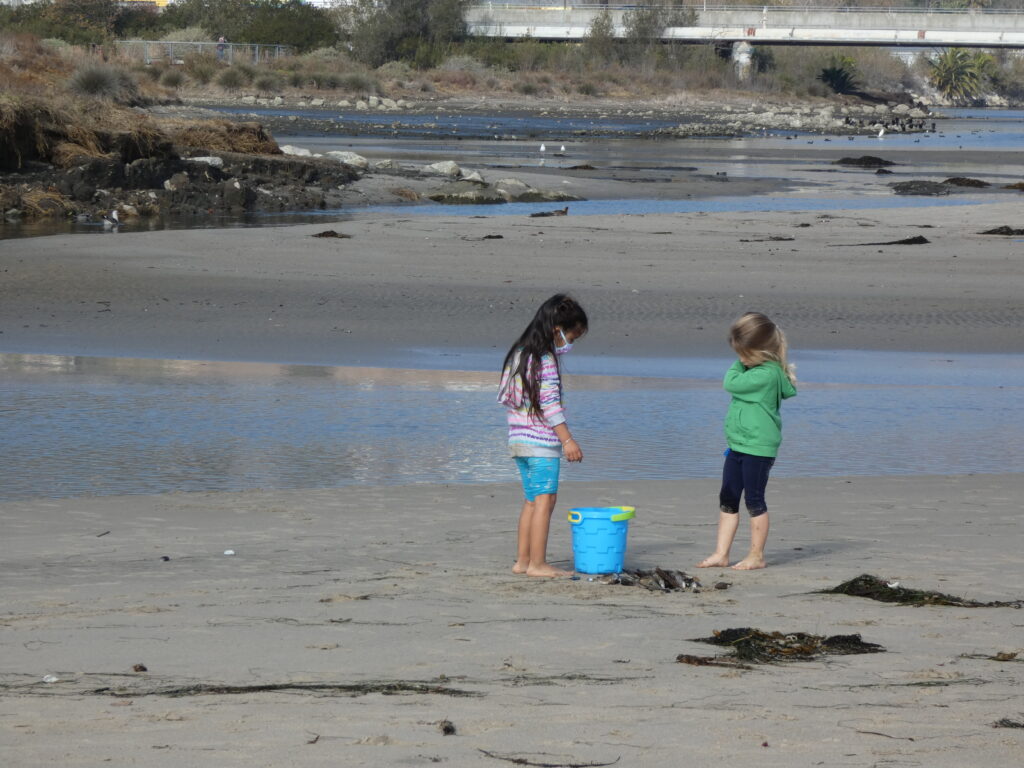
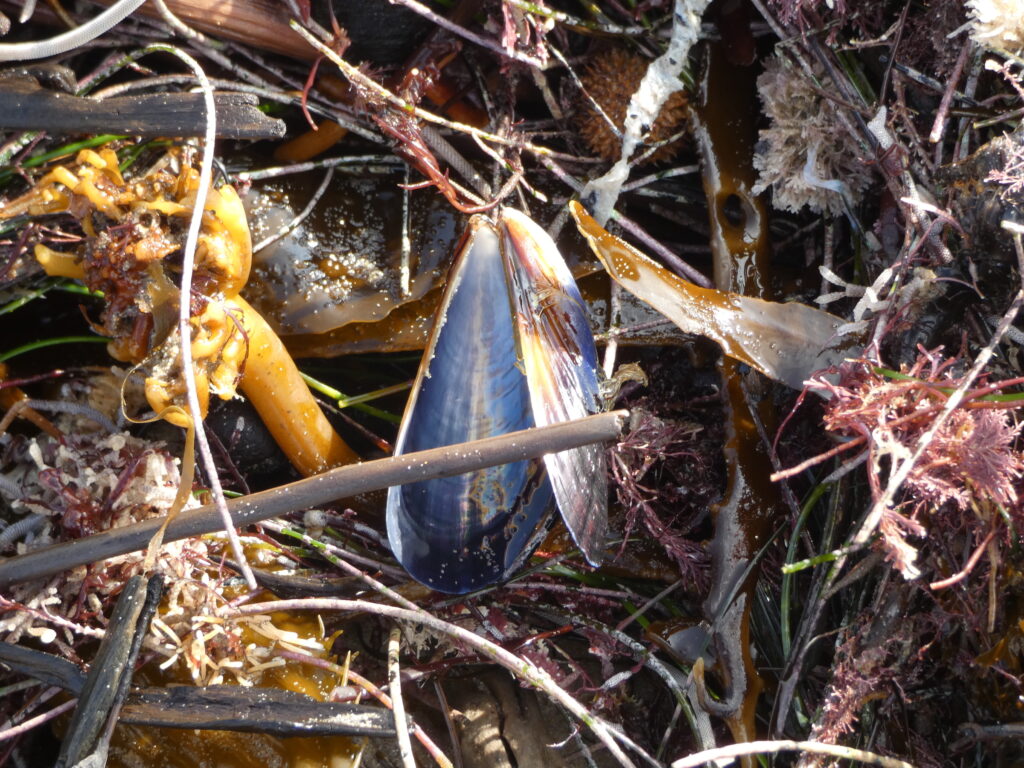
Photographing shells and other sea treasures and leaving them on the beach is a more ecologically friendly approach to beach combing, but it is legal to take a few empty shells or a bit of driftwood, provided that the tide pools and their inhabitants are not harmed in the process.
At low tide in the tide pools along the shore of a rocky beach you are almost guaranteed to spot anemones, sea hares, and tiny dragon-like sculpin fish, but you may also encounter rarer denizens of the intertidal zone, like the two-spot octopus, or the impossibly colorful Spanish shawl nudibranch—a kind of extra-fancy sea slug.
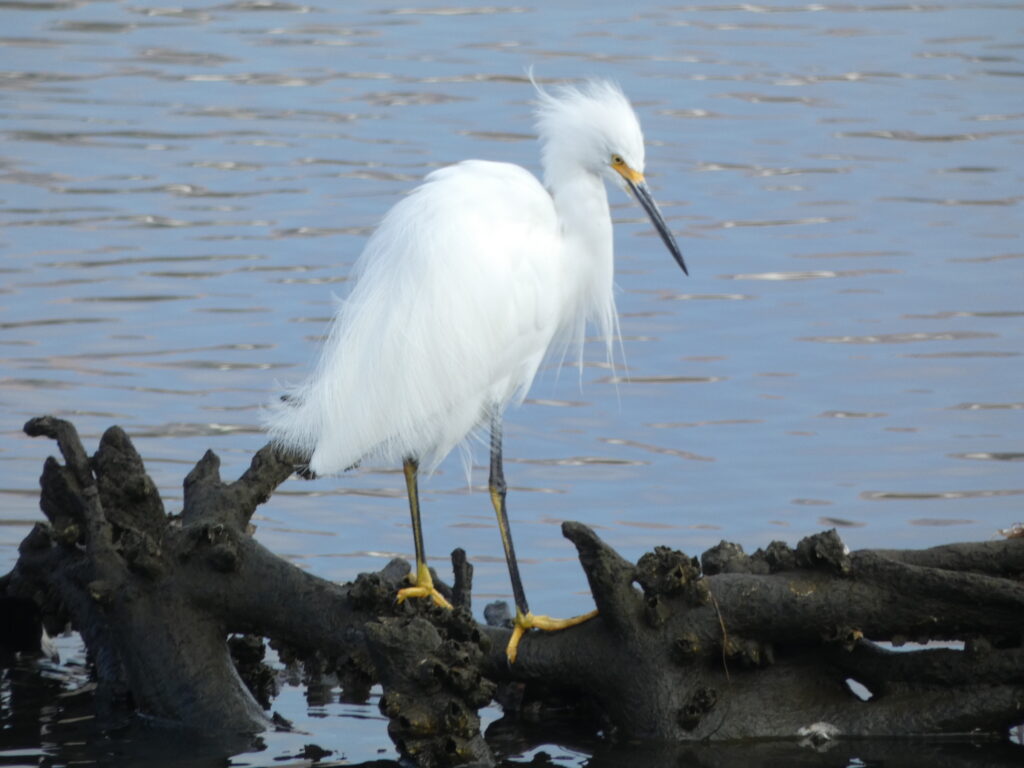
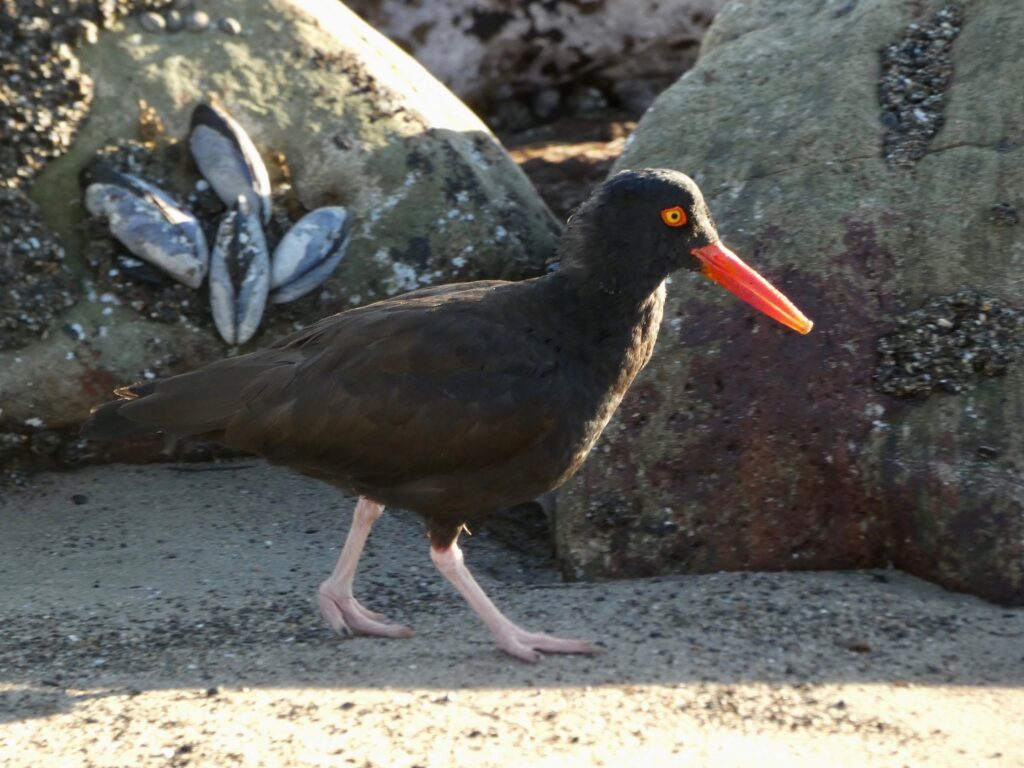
Low tide offers human visitors a rare window to an unseen world, but for shorebirds it’s an all-you-can-eat smorgasbord. Look for egrets, herons, gulls of every size, sandpipers, curlew, godwits, plovers and even the occasional kingfisher—blue gray with a crown of spiky feathers, and shaped like an old fashioned lawn dart. Apps like iNaturalist make it easy to identify birds and marine organisms.
Low tides are a delight for beachcombers, but it’s important to remember that the other side of a minus tide can be an extreme high tide. That’s not a problem during calm weather, but when there is big surf it can take just minutes for a beach to disappear once the tide has turned. Always keep an eye on the time.
It’s a good idea to arrive early or late on the weekends, which are almost always busy. Visit on a weekday and you may find you have the beach almost entirely to yourself. Pay parking at local state beaches is $12 for a full day, $6 for 2 hours and $3 for one hour. Frequent beachgoers may find that the state’s annual pass program is a good deal at $195 for unlimited year-round parking.
Thanks to the California Coastal Act, all beaches below the mean high tide line are public beaches, provided one keeps to the wet sand. Winter low tides are an opportunity to explore one of California’s greatest treasures.
Upcoming afternoon minus low tides include January 15, 16, and 25-30, and February 7-13 and 23-28.
Tide tables are readily available online, or in app form. NOAA’s Tides and Currents website is one of the best, with an option to generate easy to read monthly tide charts. https://tidesandcurrents.noaa.gov
